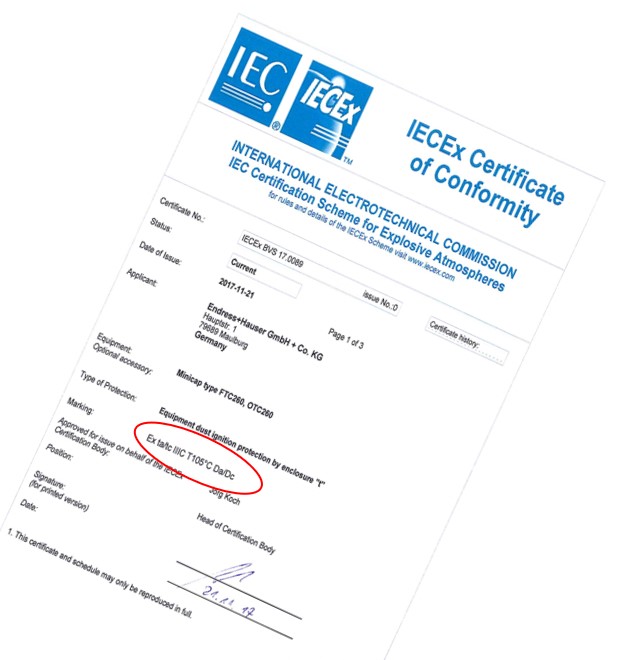Our Roar Solutions Diaries
Our Roar Solutions Diaries
Blog Article
The 7-Second Trick For Roar Solutions
Table of ContentsRumored Buzz on Roar SolutionsRoar Solutions Can Be Fun For EveryoneRoar Solutions Fundamentals Explained
In order to protect setups from a potential surge an approach of evaluating and categorizing a potentially hazardous area is required. The objective of this is to make certain the right selection and setup of tools to ultimately protect against an explosion and to guarantee security of life.
(https://www.cheaperseeker.com/u/roarsolutions)
No equipment should be installed where the surface temperature level of the tools is above the ignition temperature of the offered hazard. Below are some common dust unsafe and their minimal ignition temperature. Coal Dust 380C 225C Polythene 420C (thaws) Methyl Cellulose 420C 320C Starch 460C 435C Flour 490C 340C Sugar 490C 460C Grain Dirt 510C 300C Phenolic Material 530C > 450C Aluminium 590C > 450C PVC 700C > 450C Residue 810C 570C The possibility of the hazard being existing in a concentration high adequate to trigger an ignition will differ from place to location.
In order to identify this danger a setup is separated into areas of threat depending upon the quantity of time the unsafe exists. These locations are described as Zones. For gases and vapours and dusts and fibres there are three areas. Area 0 Area 20 An unsafe atmosphere is extremely most likely to be existing and may exist for long durations of time (> 1000 hours annually) or also continuously Area 1 Area 21 A hazardous environment is possible but not likely to be existing for extended periods of time (> 10 450 C [842 F] A category of T6 implies the minimal ignition temperature level is > 85 C [185 F] Dangerous location electrical tools possibly designed for use in higher ambient temperatures. This would showed on the ranking plate e.g. EExe II C T3 Ta + 60C( This implies at 60C ambient T3 will not be gone beyond) T1 T1, T2, T3, T4, T5, T6 T2 T2, T3, T4, T5, T6 T3 T3, T4, T5, T6 T4 T4, T5, T6 T5 T5, T6 T6 T6 A T Class rating of T1 implies the optimum surface area temperature created by the tool at 40 C is 450 C. Thinking the connected T Class and Temperature level rating for the equipment are proper for the location, you can constantly utilize a tool with a more rigorous Division rating than required for the location. There isn't a clear solution to this concern regrettably. It truly does depend on the type of devices and what repairs need to be executed. Devices with details test treatments that can not be performed in the area in order to achieve/maintain 3rd party rating. Have to come back to the manufacturing facility if it is before the tools's service. Area Repair Work By Authorised Worker: Complicated testing may not be required nonetheless specific procedures may need to be adhered to in order for the devices to keep its 3rd party rating. Authorised personnel need to be used to perform the work appropriately Repair work must be a like for like replacement. New component must be considered as a straight replacement requiring no unique testing of the equipment after the fixing is complete. Each piece of equipment with a hazardous score should be examined separately. These are outlined at a high level below, but also for even more comprehensive information, please refer directly to the standards.
Indicators on Roar Solutions You Need To Know
The tools register is a detailed database of devices records that includes a minimum collection of fields to recognize each thing's location, technological parameters, Ex lover classification, age, and environmental data. The proportion of Thorough to Close inspections will be determined by the Tools Risk, which is examined based on ignition threat (the probability of a source of ignition versus the likelihood of a flammable atmosphere )and the hazardous location classification
( Zone 0, 1, or 2). Executing a robust Risk-Based Evaluation( RBI )approach is vital for making sure compliance and security in managing Electric Tools in Hazardous Locations( EEHA).
Roar Solutions for Dummies

In terms of eruptive danger, a harmful area is a setting in which an explosive ambience is existing (or might be anticipated to be existing) in quantities that call for unique safety measures for the building and construction, setup and use equipment. eeha courses. In Our site this post we check out the challenges faced in the work environment, the danger control measures, and the required expertises to work safely
It is a consequence of contemporary life that we produce, save or manage a series of gases or fluids that are deemed flammable, and a variety of dirts that are deemed flammable. These materials can, in specific conditions, form eruptive ambiences and these can have significant and awful consequences. A lot of us recognize with the fire triangular get rid of any kind of one of the 3 elements and the fire can not take place, yet what does this mean in the context of dangerous areas? When damaging this down into its most basic terms it is basically: a mix of a particular quantity of launch or leak of a specific substance or material, blending with ambient oxygen, and the existence of a source of ignition.
In many instances, we can do little concerning the levels of oxygen airborne, however we can have substantial impact on sources of ignition, for instance electric equipment. Unsafe areas are recorded on the hazardous area classification drawing and are identified on-site by the triangular "EX" indicator. Right here, amongst other crucial information, zones are split right into three kinds depending upon the threat, the chance and period that an explosive atmosphere will exist; Area 0 or 20 is regarded one of the most dangerous and Area 2 or 22 is deemed the least.
Report this page